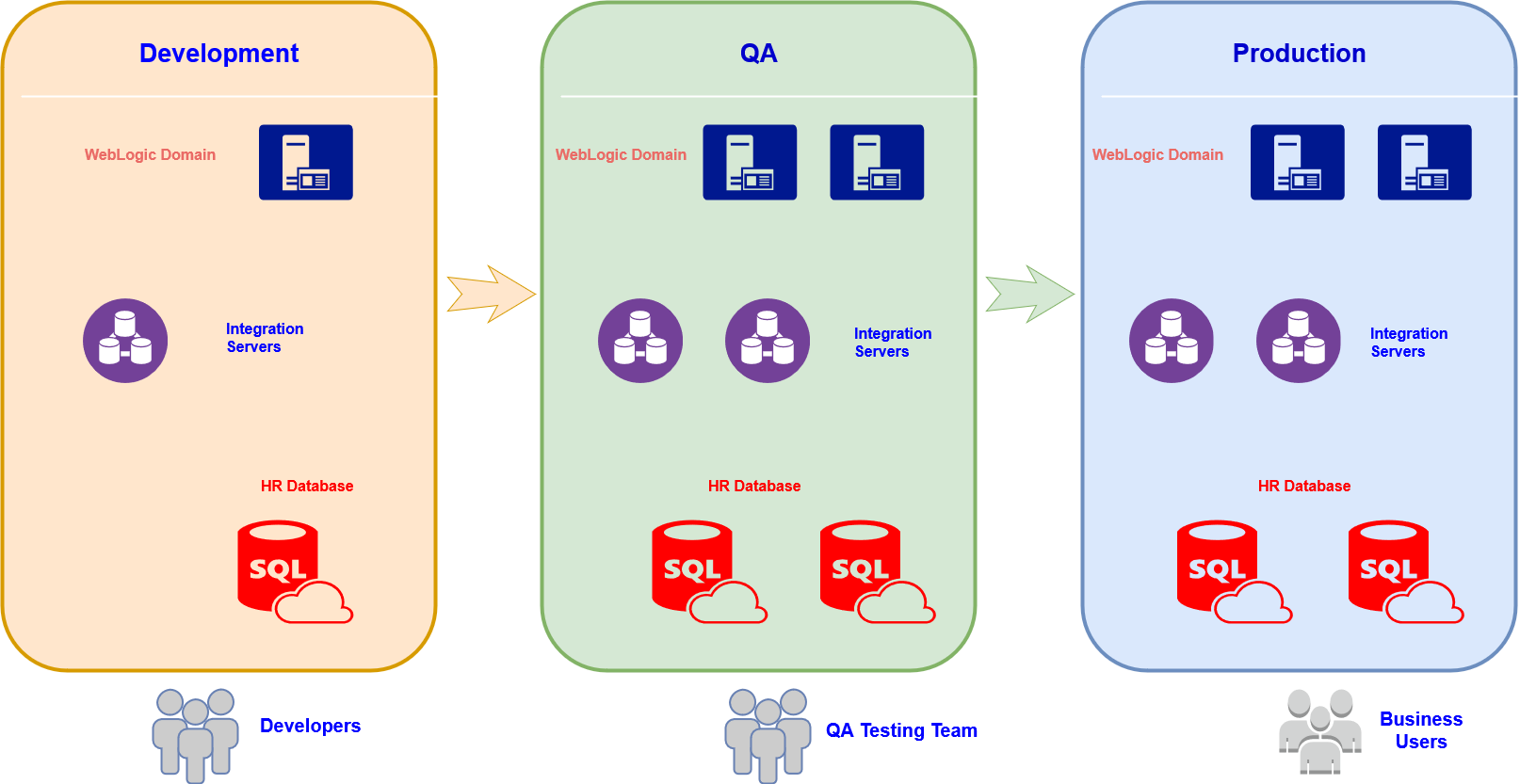Topology
All companies, large and small, manage multiple environments for the purpose of development, testing, or hosting production solutions. Each of these environments comprise a number of platforms, technologies, and packaged applications across a varying number of servers (whether physical, virtual, or in the cloud). The centralized FlexDeploy server requires configuration information to be able to communicate across this broad topology.
Let's checkout an example of environments below. You may have completely different names and number of environments. FlexDeploy allows for configurations of environments which is further used for approvals, schedule windows, pipeline configurations etc.
Now each environment will generally have some technology components. As environments are used for different purposes, it is very likely that same application installed in various environments may be configured differently even in terms of capacity. Our goal is to promote code and configurations through environments for various applications, middleware, databases. FlexDeploy calls such individual track of technology across environments as Instance. See example below for horizontal cross sections through environments. Each instance is uniquely identified in FlexDeploy.
Now that we have Environments and Instance, it is easy to realize that there is intersection for both logical constructs. This intersection is known as Environment Instance. Each Environment Instance represents physical installation of some technology. You will configure each Environment Instance for various configuration properties and endpoints, which will allow FlexDeploy to communicate with that specific installation to perform necessary actions. Note that Build and Deploy actions are also invoked in context of specific Environment Instance, i.e. you may be deploying EAR application to DEV environment for WLS1 instance.
So, FlexDeploy allows customers to describe their topology using Environments, Instances, and Endpoints. This topology definition provides the necessary mechanics for configuring Endpoints and properties to effectively manage your enterprise network of platforms, technologies, applications and servers.
Screens used to configure and maintain Topology Settings
- style


